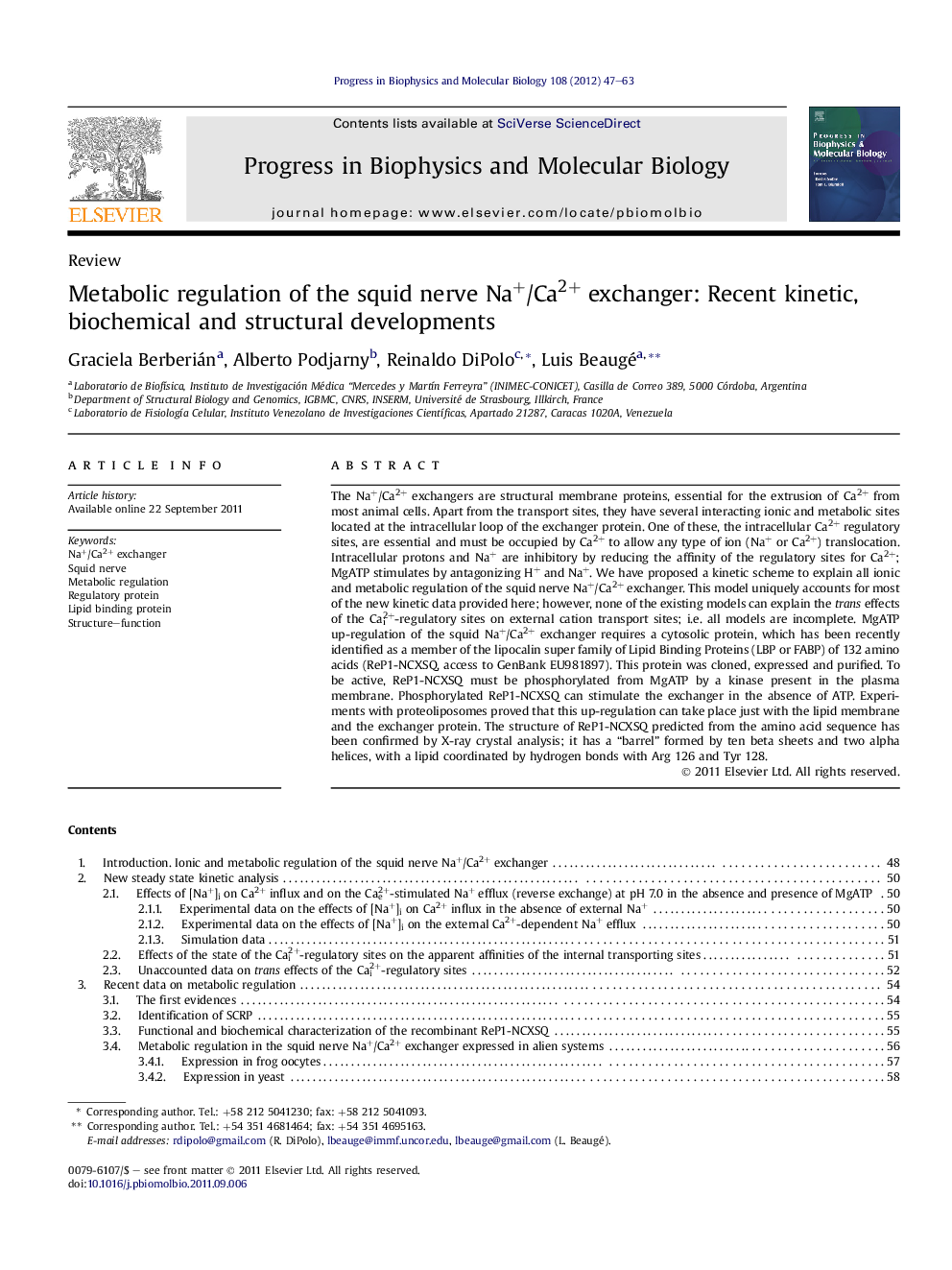| Article ID | Journal | Published Year | Pages | File Type |
|---|---|---|---|---|
| 2070201 | Progress in Biophysics and Molecular Biology | 2012 | 17 Pages |
The Na+/Ca2+ exchangers are structural membrane proteins, essential for the extrusion of Ca2+ from most animal cells. Apart from the transport sites, they have several interacting ionic and metabolic sites located at the intracellular loop of the exchanger protein. One of these, the intracellular Ca2+ regulatory sites, are essential and must be occupied by Ca2+ to allow any type of ion (Na+ or Ca2+) translocation. Intracellular protons and Na+ are inhibitory by reducing the affinity of the regulatory sites for Ca2+; MgATP stimulates by antagonizing H+ and Na+. We have proposed a kinetic scheme to explain all ionic and metabolic regulation of the squid nerve Na+/Ca2+ exchanger. This model uniquely accounts for most of the new kinetic data provided here; however, none of the existing models can explain the trans effects of the Cai2+-regulatory sites on external cation transport sites; i.e. all models are incomplete. MgATP up-regulation of the squid Na+/Ca2+ exchanger requires a cytosolic protein, which has been recently identified as a member of the lipocalin super family of Lipid Binding Proteins (LBP or FABP) of 132 amino acids (ReP1-NCXSQ, access to GenBank EU981897). This protein was cloned, expressed and purified. To be active, ReP1-NCXSQ must be phosphorylated from MgATP by a kinase present in the plasma membrane. Phosphorylated ReP1-NCXSQ can stimulate the exchanger in the absence of ATP. Experiments with proteoliposomes proved that this up-regulation can take place just with the lipid membrane and the exchanger protein. The structure of ReP1-NCXSQ predicted from the amino acid sequence has been confirmed by X-ray crystal analysis; it has a “barrel” formed by ten beta sheets and two alpha helices, with a lipid coordinated by hydrogen bonds with Arg 126 and Tyr 128.
